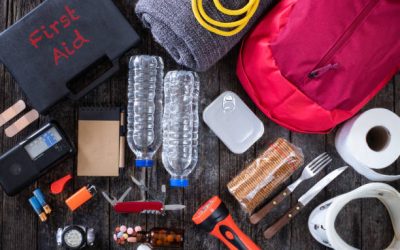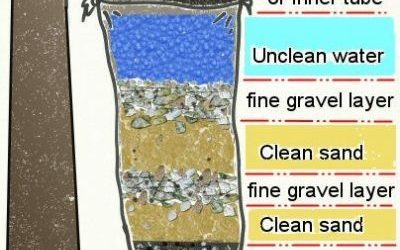Maybe you don’t need to learn about survival clothing. Maybe you always hike with a spare jacket. Perhaps you never go out into the wilderness overnight, but just for day hikes. Or you bring lots of warm clothing when you do go backpacking.
Nonetheless, hundreds of people die or come close to dying every year from exposure. They thought they were prepared. They didn’t expect their clothes to get wet from falling in a stream, they didn’t think they’d be out there for the night, or they get lost for days.
Coming down from Mount Whitney I met several young men in t-shirts on their way up, determined to get to the top. They had no gear, and not enough time, but they probably made it there by sunset anyhow. They also certainly didn’t make it the eleven miles back to their car before dark. It was below freezing that night, so I imagine they were uncomfortable at best.
Quick Survival Clothing
What survival clothing could they have made in that situation? One of them did have a light jacket. He could have used his t-shirt as a hat (a lot of heat is lost through the head) and filled his jacket with the fluff from the cattail seedheads for insulation. (Cattail down was once used to fill those old orange life preservers.)
Insulation is the important principle here. You can stuff a jacket, shirt, sweater or pants with dry leaves, milkweed down, bracken ferns or almost anything that creates a lot of “dead air space.” It’s better if you have two layers to sandwich it between, but being itchy is better than being frozen in any case.
In a jam, you can also use the flat leaves of cattail plants to weave a vest that will block the wind and some rain. Two bread bags full of milkweed down or other silky plant fibers make warm mittens (tie them at the wrists). A plastic bag full of the same could be tied onto your head as a hat.
Usually, you’ll do better to look first at what you have, before looking to kill animals for their skins, or weave grass skirts. If you have a sleeping bag, it can double as a coat – just wrap it around you. Socks can be mittens, and garbage bags can be made into snow pants.
A garbage bag can also be a raincoat. Otherwise, tie bunches of grass tightly together along a string or strip of cloth, and then wrap it around your shoulders. This will repel a light rain. You can fashion a rain hood of birchbark as well.
In the desert you can make a sun-hat of large leaves, like those from a fan palm. String some together to wrap around your shoulders to prevent sunburn.
You’ll probably never have to use animal skins for survival clothing. You might never lose your shoes and need to glue tree bark to your feet with pine sap, for hiking. Still, knowing how to improvise a few basic pieces of survival clothing can make you more comfortable, and possibly save your life.






